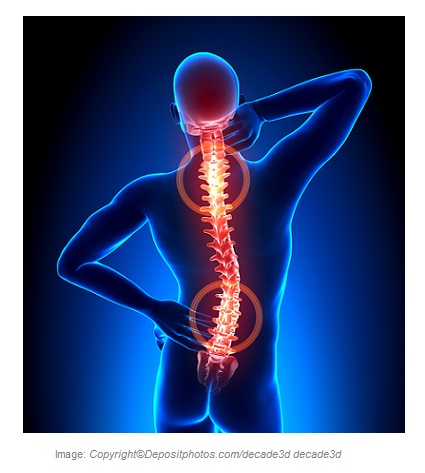Female athlete triad (FAT) is an athletic syndrome characterized by the triad of  disordered eating, amenorrhea, and osteoporosis. These three medical conditions are interrelated, and the syndrome is not often recognized by health care professionals.
disordered eating, amenorrhea, and osteoporosis. These three medical conditions are interrelated, and the syndrome is not often recognized by health care professionals.
Disordered eating comes from low intake of calories or excessive expenditure of calories due to intense exercise. In fact, it is because of imbalance between calorie intake and calorie expenditure. Disordered eating leads to a decrease in energy level, which is called “energy drain” among athletes.
Female athletes with anorexia nervosa or bulimia nervosa also suffer from disordered eating, and it is highly important to distinguish them from FAT syndrome.
Amenorrhea is the cessation of monthly menstruation for three consecutive months. Exercise – induced amenorrhea results from dysfunction of the axis of HPO (hypothalamic – pituitary – ovary). The four important elements contributing to dysfunction of the axis of HPO are poor diet, low body fat, stress (physical or emotional), and excessive weight loss. Dysfunction of the axis of HPO causes diminished production of estrogen and hormonal imbalance followed by amenorrhea.
Amenorrhea is common among athletes especially endurance athletes and they should not be labeled as FAT syndrome unless the other two components exist.
There is usually a direct relationship between exercise and bone density. That means bone density increases with exercise. However, decreased bone density or osteoporosis in physically active females is one of the paradoxes of exercise. It is believed that decreased bone density results primarily from blunted estrogen synthesis which in turn results from amenorrhea. Inadequate mineral intake is a secondary factor.
A decease in bone density increases the risk of stress fractures. For every 1% decrease in bone density, the risk of stress fractures increases by about 10%.
Risk Factors for FAT Syndrome:
The true incidence of FAT syndrome is unknown. However, it is estimated that it may affect 20 – 60% of female athletes.
Non – Professional Athletes:
Among regular gym – goers, the risk factors for developing FAT syndrome include:
- Women who train intensely while being on low calorie diets.
- Vegetarians who exercise excessively.
- Female gym – goers with the following medical conditions:
- Anorexia nervosa.
- Premature – ovarian syndrome (POS).
- Hypothyroidism.
Professional Athletes: 
Female athletes involved in endurance activities are more prone to FAT syndrome. Athletes from the following sports are at higher risk for developing FAT syndrome:
- Athletics:
- Jumps (high jump, long jump, triple jump, and pole vault).
- Middle distance (800 m, 1500 m, and 3000 m).
- Long distance (5000 m, 10000 m, 20 km walk, and marathon)
- Ballet.
- Bodybuilding.
- Cycling.
- Diving.
- Figure skating.
- Fitness modeling.
- Gymnastics.
- Swimming.
Approach to FAT Syndrome:
FAT syndrome should be managed by a multidisciplinary team of a physician, a sports nutritionist, and a psychologist. The optimal approach would be intervening in training sessions and dietary changes. To re-establish normal menstruations, the following interventions would be helpful:
- Decreasing exercise intensity by 20%.
- Increasing total calorie intake by 20%.
- Increasing body weight by 2%.
- Preventing body fat from dropping to below 17%.
For dietary changes and supplementations in disordered eating and osteoporosis, see “Osteoporosis” and “Eating Disorders” under the section of “Medicinal Nutrition”.

